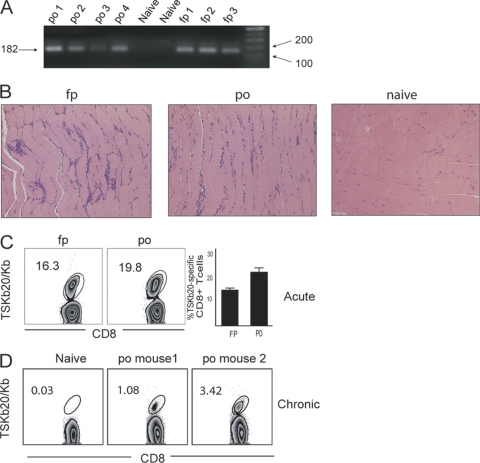Fig. 1.
Oral infection with metacyclic trypomastigotes of T. cruzi leads to systemic infection. (A) Metacyclic trypomastigotes delivered by either p.o. or f.p. route are detectable in skeletal muscle. DNA was extracted from skeletal muscle of mice 21 to 25 dpi, and a 182-bp segment of satellite DNA was amplified by PCR. n = 10 for f.p. and n = 7 for p.o. The sizes of the PCR product and markers are shown (in base pairs) at the left and right, respectively. (B) Similar inflammatory infiltrates develop in skeletal muscle of mice infected by f.p. and p.o. H&E sections of skeletal muscle are shown for naïve and p.o. and f.p.-infected mice at 35 dpi and are representative of at least 3 more experiments that ended between 21 and 40 dpi. (C and D) T. cruzi infection via the oral route induces a robust and lasting systemic T cell response. Representative flow plots show the frequency of CD8+ T cells specific for TSKb20 in PBMC at 14 dpi (n = 10 for p.o. and n = 5 for f.p. [C]), and the means ± standard error of the mean (SEM) are displayed. (D) TSKb20-specific CD8+ T cells were measured in spleens of two individual mice infected p.o. at 140 dpi.

